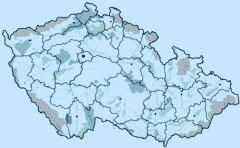Úvod - Hradecko a Podzvičínsko - Hradec Králové - HRADEC KRÁLOVÉ

Tip: zvolte region z mapy
Zobrazit celou ČR
|
Zvoleno: Hradecko a Podzvičínsko - Hradec Králové - Informační centra
|
| Region |
|
| Typ |
|
| Obec |
|
|
|
|
| Pardubicko, Chrudimsko a Hlinecko, Českomoravské pomezí, Český les, Chodsko a Stříbrsko, Moravský kras a Blansko, Střední Čechy jihovýchod, Střední Čechy severovýchod Polabí, Máchův kraj, Vysočina, Hrubý a Nízký Jeseník, Kladské pomezí, Šumava, Jižní Čechy, Ostravsko, Opavsko a poodří, Lužické hory a Liberecko, Jizerské hory a Frýdlantsko |
|
|
HRADEC KRÁLOVÉ |
 |
|
Hradec Králové is situated about 100 kilometres to the east of Prague, north of Pardubice. It lies on the confluence of the rivers Labe (the Elbe) and Orlice. Hradec Králové was the region's natural centre already in the Middle Ages – it was a dowry town of the Queens of Bohemia. The dominant of the town is the Gothic Church of the Holy Ghost located on Velké náměstí (square). The town's historic centre boasts a wealth of other Gothic, Renaissance and Baroque relics.
The city’s modern face, reflecting the spirit of Art Nouveau and Functionalism, is the work of two renowned architects, Jan Kotěra and Josef Gočár. One of Kotěra's most stately buildings is the Museum dating from years 1908-1912. Josef Gočár designed a number of buildings for Hradec Králové, including a grammar school, remarkable for their brickwork, which displays a unique deep red colour. A bridge with town hydropower station dating from the year 1914 is also noteworthy. This ideal combination of historical and modern architecture had earned Hradec Králové the flattering name of "The Salon of the Republic".
Hradec Králové boasts an eventful cultural life, its most important venues being the Klicpera Theatre, the Drak Marionette Theatre, the Philharmonic, the Museum of Eastern Bohemia and the Gallery of Modern Art. After a cultural experience, the pedestrian zone in the city centre often entices visitors for a short stroll.
|
|
|